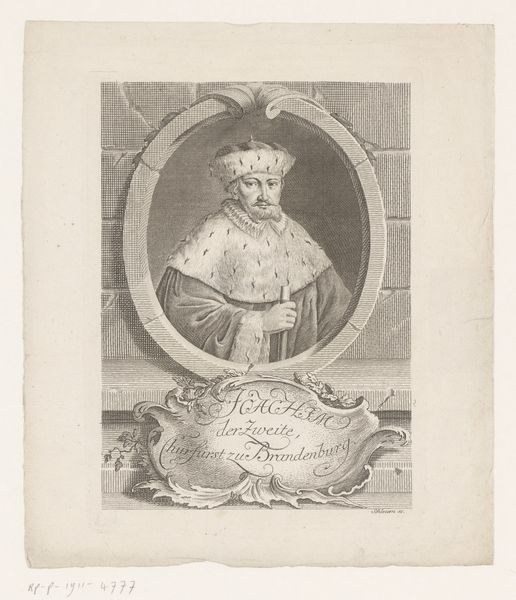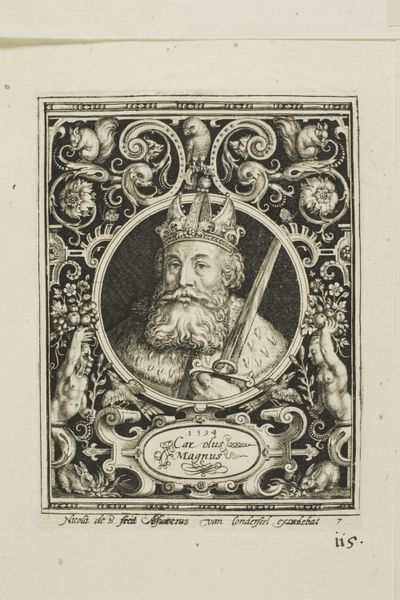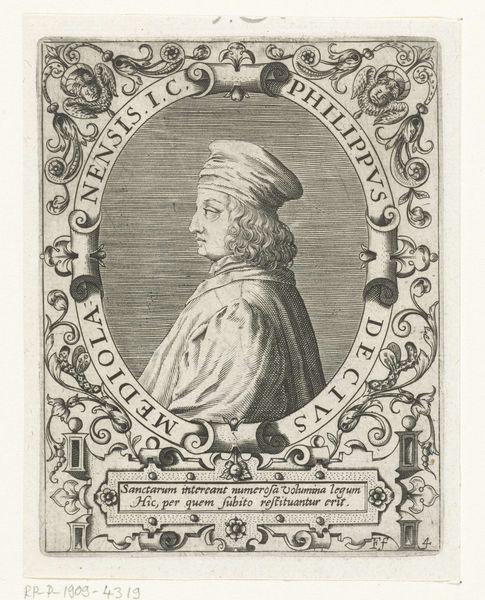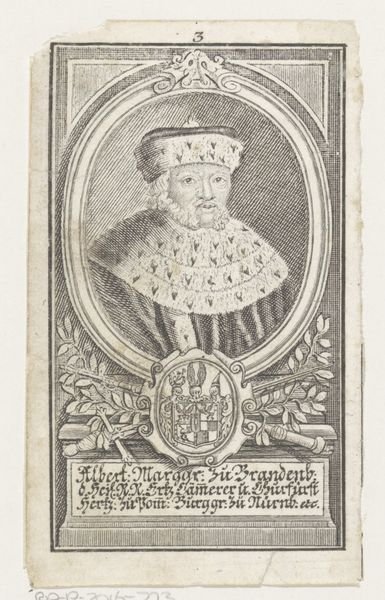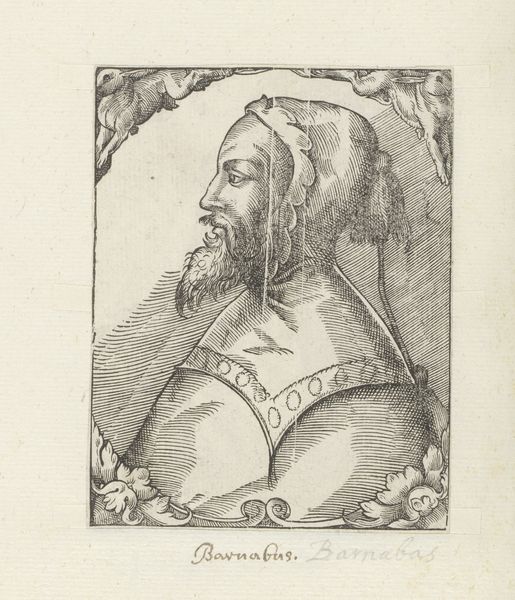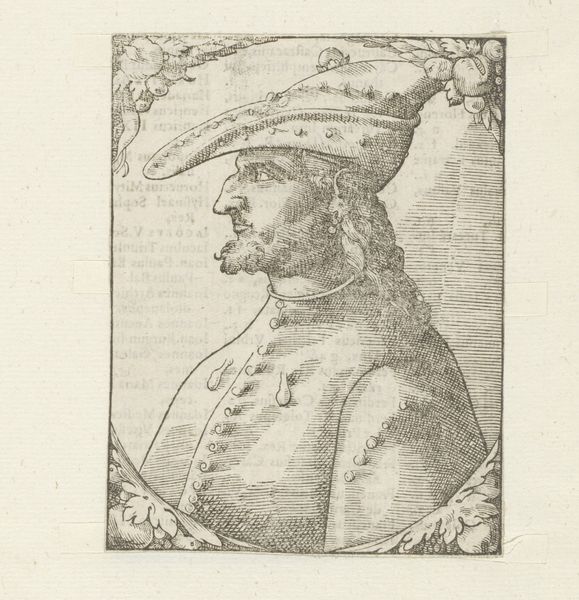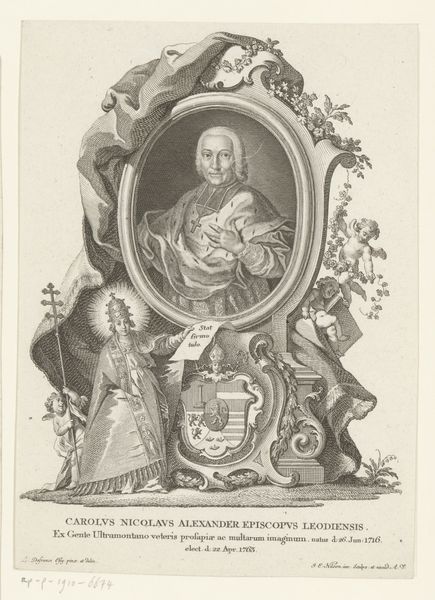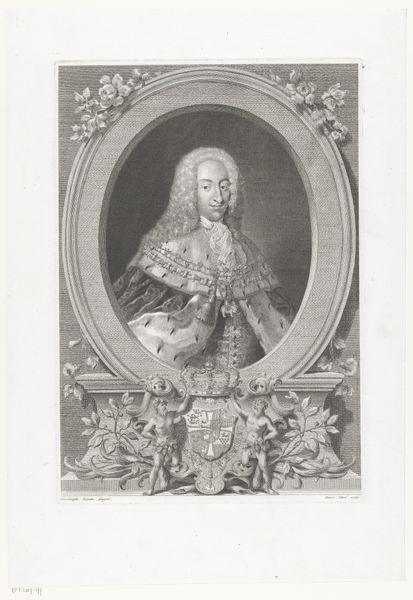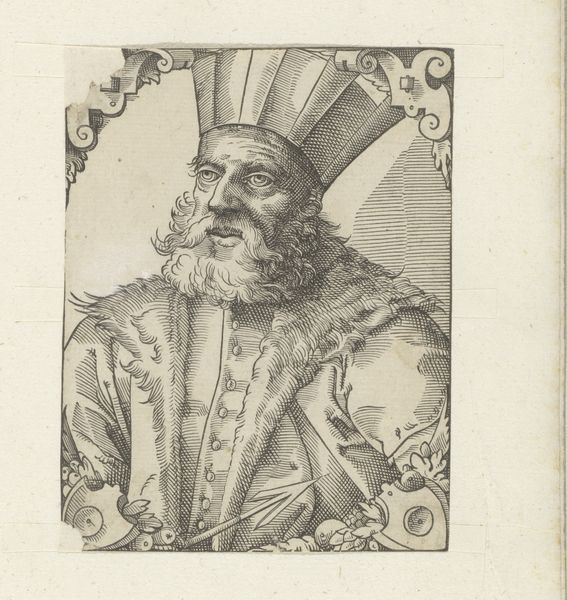
Portret van Albrecht III Achilles, keurvorst van Brandenburg 1722 - 1775
0:00
0:00
print, engraving
#
portrait
#
baroque
# print
#
old engraving style
#
history-painting
#
engraving
Dimensions: height 82 mm, width 145 mm
Copyright: Rijks Museum: Open Domain
Editor: Here we have Georg Friedrich Schmidt's engraving, "Portret van Albrecht III Achilles, keurvorst van Brandenburg," dating roughly from 1722 to 1775. The detail achieved with such fine lines is really quite striking. I'm especially drawn to the framing around the portrait itself. What historical context might illuminate our understanding of this print? Curator: Well, consider the era in which this was created and its distribution method as a print. Prints like these played a significant role in shaping public perception of rulers. What statements do you think the artist tries to do? Editor: It seems like it’s trying to portray Albrecht as a strong and noble leader. I'm thinking of the armor, weapons and flags flanking the portrait and contributing to a regal image. It’s clearly meant to project power, isn’t it? Curator: Precisely. It served as visual propaganda, circulating images and solidifying certain narratives of power. But let’s also consider its location – the Rijksmuseum. How does a contemporary museum space affect its interpretation? Editor: Good point! Displaying it in a museum turns it into an object of historical and artistic significance, inviting critical engagement rather than pure reverence, right? The museum context encourages viewers to analyze the work rather than blindly accepting its message. Curator: Exactly. Its presence prompts questions about power, representation, and the enduring influence of historical narratives. These portraits cemented the legacy. What is left is a story, a partial view. Editor: This discussion makes me appreciate the print so much more! Looking at the politics behind such an image changes how you perceive it entirely. Curator: Agreed. Seeing artwork as active agents in society, helps uncover so much about past power structures and the shaping of collective memory.
Comments
No comments
Be the first to comment and join the conversation on the ultimate creative platform.
